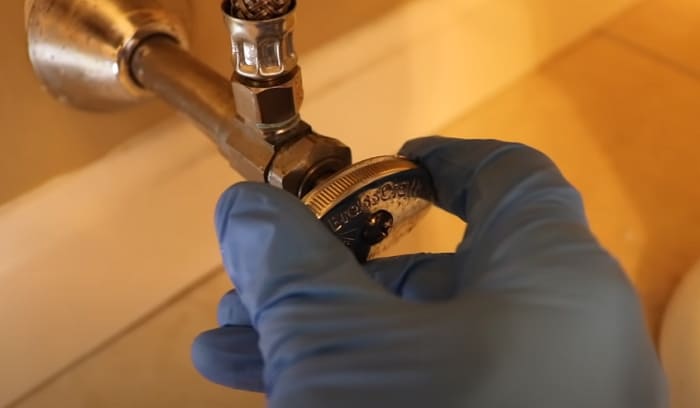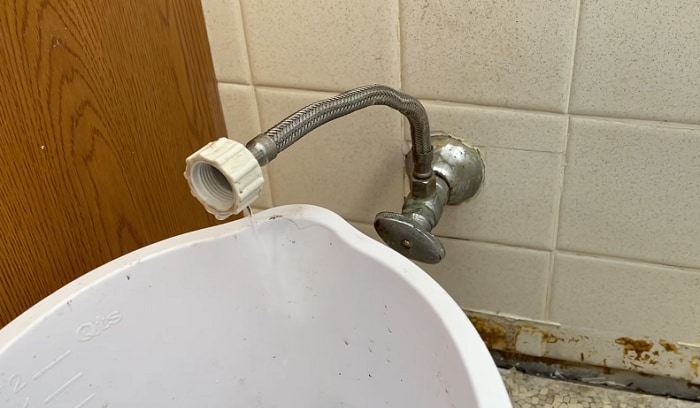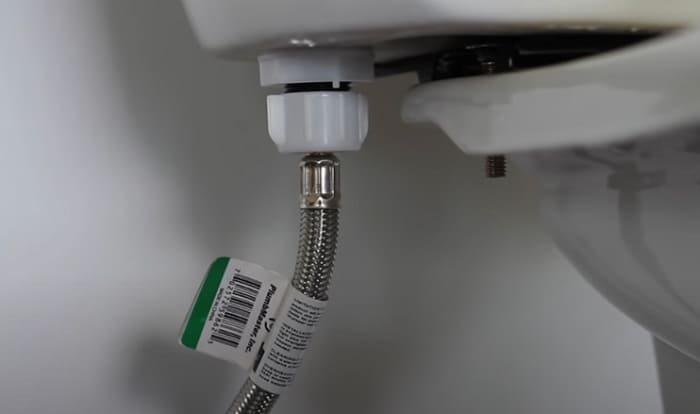Some toilets may not have a shut-off valve. It might be the reason why you turned off the water to the toilet but it is still running. There are three ways you can turn off the water in the toilet with no valve.
The foolproof way to do it is to shut the main valve which can be found outdoors and indoors, specifically in the basement. You can also do it by maintaining the float lever inside the toilet tank in a horizontal position or disconnecting the water supply line of the toilet.
So, you now have a general idea of how to turn off water to toilet with no valve. Still, you need a detailed guide with all the steps.
Table of Contents
Your Ultimate Guide to Turn Off Water to Toilet With No Valve
Here’s your ultimate guide when you can’t turn off the water to a toilet that doesn’t have a valve. As mentioned, there are three ways to do it. Aside from the necessary steps, you’ll know the tools that you need to get for this task.
1. Turning off the shut-off main valve
What to prepare: adjustable crescent wrench, screwdriver, and penetrating oil
Steps on how to find the main shut-off valve:
- Step 1: The location of the shut-off valve depends on the type of house that you have. To shut off the water to the toilet in the apartment, you have to know that it’s usually near the water meter. Some valve is beside the meter and kept in the same case, which you can open with a screwdriver.
- Step 2: There are different forms of the shut-off valve. One is a red wheel that you have to turn clockwise and the other is a lever valve that needs to be at 90 degrees to shut down. Furthermore, the latter should be perpendicular to the water pipe. When turning the valve, a crescent wrench can make it easier for you.
- Step 3: These valves are near the basement but if not, they can be next to the water heater. So, you have to check the external wall. They are usually on the section where the main service line comes in.
- Step 4: In some houses, the shut-off valve is situated in the crawlspace, basement, or utility room like a laundry room. For those who have a private well, the very first place that you should check is where the pressure tank is.
- Step 5: Since this shut-off valve remains unmoved most of the time, it might get stuck. Hence, prepare some penetrating oil in case you need it when turning off the toilet water valve.
- Step 6: When you successfully shut the main valve, you may find some pressure in the water system. To liberate the pressure, open the faucets in the lowest area of your house.
2. The float lever in the water tank should be in a horizontal position
For this, you will only need your hands to shut off toilet water. Here are the things you have to be particular with so you can easily do toilet shut-off valve no handle.
- A float lever is linked to the fill valve to control the flow of the water, which is only released when you flush the toilet. It moves below the valve to free the water that fills the tank. As the toilet tank is gradually filled with water, the float lever moves upwards. The lever will stop moving once the tank is filled.
- After the tank is filled, the float lever is back on the top of the tank in a horizontal position as it stops the water flow. Therefore, this position should be maintained.
- You can stop the float lever from moving even though someone will flush the toilet. A piece of wood should be inserted below the float lever to prohibit motion. This is your option if there is no shut-off valve or you fail to find the main valve. This method also buys you time by stopping the overflow of water from your toilet while you wait for the plumber to arrive.
3. Disconnecting the toilet’s water supply
What to prepare: plastic bag, duct tape, wrench, wax ring, toilet flange, and bucket
Steps on how to disconnect toilet’s water supply:
- Step 1: The toilet’s water supply line is a steel braided or plastic line that is connected to the tank and fill valve. Place your hand under the tank to find it.
- Step 2: When removing, try to loosen it with your hands first so you won’t damage the couplings. Then, it will be fine to use a wrench.
- Step 3: After taking out the line, quickly cover it with a plastic bag and seal it with duct tape.
- Step 4: You’ll need a bucket to catch the water that is still in the tank. This task is a breeze but it also requires replacing the toilet flange or wax ring. You might create a mess in your toilet but at least, the other water outlets are not blocked.
Is It Alright to Turn Off Water to the Toilet?
It’s alright to turn off the water to the toilet when going on a vacation or away from your house for a long time. But it’s not if you only need to work on the toilet.
Turning off the main shut-off valve affects the entire house. You may need water for the bath and kitchen. The last option is to disconnect the water supply line from the toilet. You can plug it off with the help of duct tape and a plastic bag as mentioned above.
Takeaway in Turning Off Water to Toilet With No Valve
How to turn off water to toilet with no valve? When you can’t stop the overflow of the toilet and you can’t find the valve, you can proceed in shutting down the main shut-off main valve.
But if you still need water in other parts of your house, you can work on the float lever and the toilet’s water supply. Though it can be messy, you reach the goal of stopping the water from flowing continuously.

I’m Paulk Webb, and I work as a writer for Saveourwaterrebates. I’m happy to put in the time and effort to conduct market research to identify the most pressing issues faced by households concerning their plumbing. Feel free to check out our guides to get the most informed recommendations for how to solve your problems.




